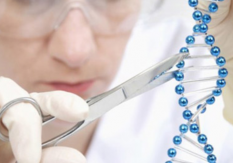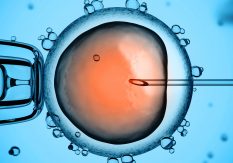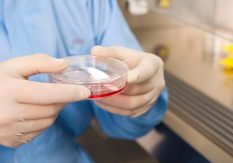


The effect of stem cell treatment on many incurable diseases has been proved. Currently the use of stem cell in many countries is still restricted. This dramatically limits the application of stem cell in the medical field. This situation maybe changed along with the latest breakthrough in stem cell research.
The speed at which research on stem cells is evolving makes it difficult to set a clear boundary between what is already reality and offers a concrete treatment opportunity and what will very likely become possible in the very near future.
Yet biomedical research is focusing on using stem cells as a tool for regenerating many tissues or organs. To date, many studies have reported promising results for the future application of stem cells in the treatment of many pathologies.

Stem Cells are unspecialised cells that can divide to give origin, at the same time, either to other stem cells (equal to the mother cell), or to the precursors of a cell progeny that will eventually give rise to terminally differentiated cells (mature cells).
Stem cells that can differentiate into any type of embryonal stem cell tissues are called totipotent, those that can differentiate into some types of cells or tissues (Adult Stem Cell) are called multipotent (or pluripotent), and those that can generate only one cell type are called unipotent. The identification of these cells is facilitated by the presence of specific markers on their surface (CD: Cluster of differentiation).
The use of autologous stem cells can avoid the formation of tumours, the transfer of infectious diseases and cacoethic immune reaction.

Embryonic Stem Cells (ES Cells) are present in the inner region of the embryo, before its “attachment” to the uterine wall. These are totipotent cells, with a significant proliferation potential, and because of this, are in high demand for basic research purposes. They can be isolated, extracted and grown in vitro, with the result that, starting from a few dozen cells, cell lines of hundreds of millions of intact stem cells can be obtained. Today, the use of embryonic stem cells is still a hotly debated topic.

Between 2010 and 2011, 41 clinical studies on stem cells were considered completed, including Cardiovascolar (Myocardial Infarction, ischemic pathology, etc.), Gastrointestinal (Crohn’s disease), Renal (acute renal failure, kidney transplants, etc.), Hepatic (cirrhosis, familial hypercholesterolemia), Pulmonary (COPD), Nervous (Neuroblastoma MS, Parkinson ALS, Ictus etc.), Pancreatic (diabetes type 1 and 2), Cutaneous (diabetes sores, systemic sclerosis), Systemic (Sjögren’s Syndrome, Lupus, GvHD), and Bone/cartilage (bone fractures, Osteogenesis Imperfecta, cartilage defects etc.).
In particular, it is worth underlining the success of a recently completed phase I study, in which mesenchymal stem cells were administered to patients suffering from acute myocardial infarction. These patients exhibited an improvement in cardiac function (EF), a reduction of arrhythmias and an overall improvement of the patient’s state of health, compared to a control group receiving placebo, without observing any significant adverse effects. Further studies will of course be completed in the forthcoming months, providing more useful information about the use of mesenchymal stem cells for the treatment of other pathologies.
In conclusion, we can affirm that, in the upcoming years, it will be possible to achieve a better understanding of the biology of mesenchymal stem cells and their therapeutic action – and cell therapy will become a new clinical paradigm, providing an effective treatment for many pathologies that are considered incurable today.

Secretome is the generic term of over 200 proteins secreted by stem cells. Such proteins are all the time secreted by stem cells in our body. Scientific research has proved that secretomes can regulate cytoactive of the cells around stem cells in the body, such as repairing or recovering the cytoactive of cells. It is therefore called the key of activating cytothesis.

There has been much interest of late in the use of adipose tissue as an alternative source of mesenchymal stem cells (MSCs), in particular with respect to bone marrow. The mononuclear portion of adipose tissue, called the stromal vascular fraction (SVF), was originally described as a resource for adipocyte precursors. These cells resemble fibroblasts from a morphological standpoint, and can differentiate into preadipocytes and generate adipose tissue in vitro.

Adult stem cells (AS Cells) act to maintain tissues and, if possible, repair them, but their potential is not endless: when they are depleted, tissues and/or organs inevitably begin to degenerate. These cells possess a particular plasticity that enables them to differentiate into different cell types. This clearly paves the way for interesting perspectives and very significant therapeutic hopes for regenerative medicine.
Among adult stem cells, those present in adipose tissue, classified as mesenchymal stem cells, attract particular interest among researchers, since they are pluripotent cells – that is to say, cells that can differentiate into different types of cells and/or tissues. Moreover, precisely because they are adult stem cells that do not belong to the “embryonic cell” class, adipose tissue cells raise no problems of an ethical nature.